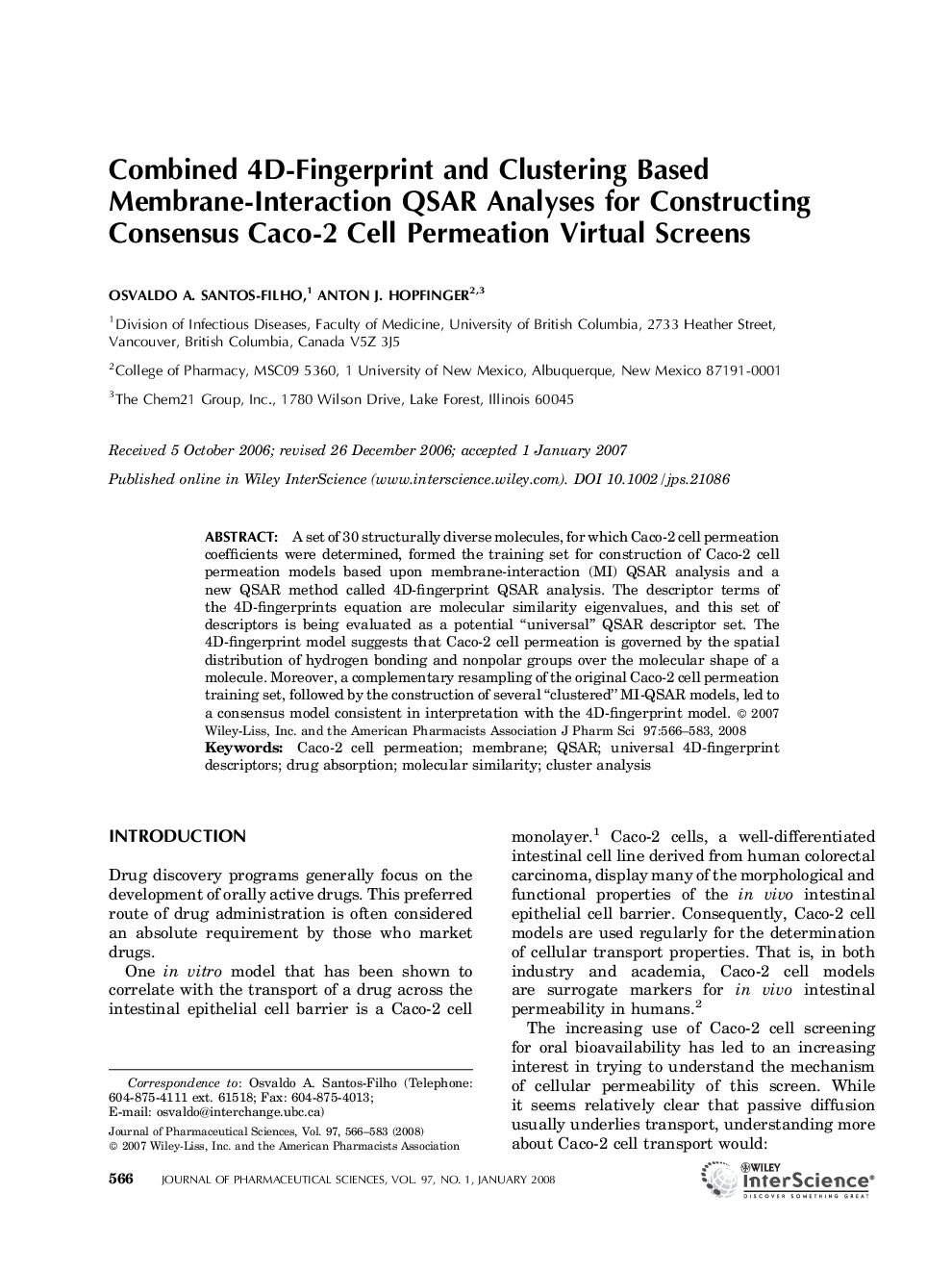| Article ID | Journal | Published Year | Pages | File Type |
|---|---|---|---|---|
| 2487616 | Journal of Pharmaceutical Sciences | 2008 | 18 Pages |
ABSTRACTA set of 30 structurally diverse molecules, for which Caco‐2 cell permeation coefficients were determined, formed the training set for construction of Caco‐2 cell permeation models based upon membrane‐interaction (MI) QSAR analysis and a new QSAR method called 4D‐fingerprint QSAR analysis. The descriptor terms of the 4D‐fingerprints equation are molecular similarity eigenvalues, and this set of descriptors is being evaluated as a potential “universal” QSAR descriptor set. The 4D‐fingerprint model suggests that Caco‐2 cell permeation is governed by the spatial distribution of hydrogen bonding and nonpolar groups over the molecular shape of a molecule. Moreover, a complementary resampling of the original Caco‐2 cell permeation training set, followed by the construction of several “clustered” MI‐QSAR models, led to a consensus model consistent in interpretation with the 4D‐fingerprint model. © 2007 Wiley‐Liss, Inc. and the American Pharmacists Association J Pharm Sci 97:566–583, 2008
